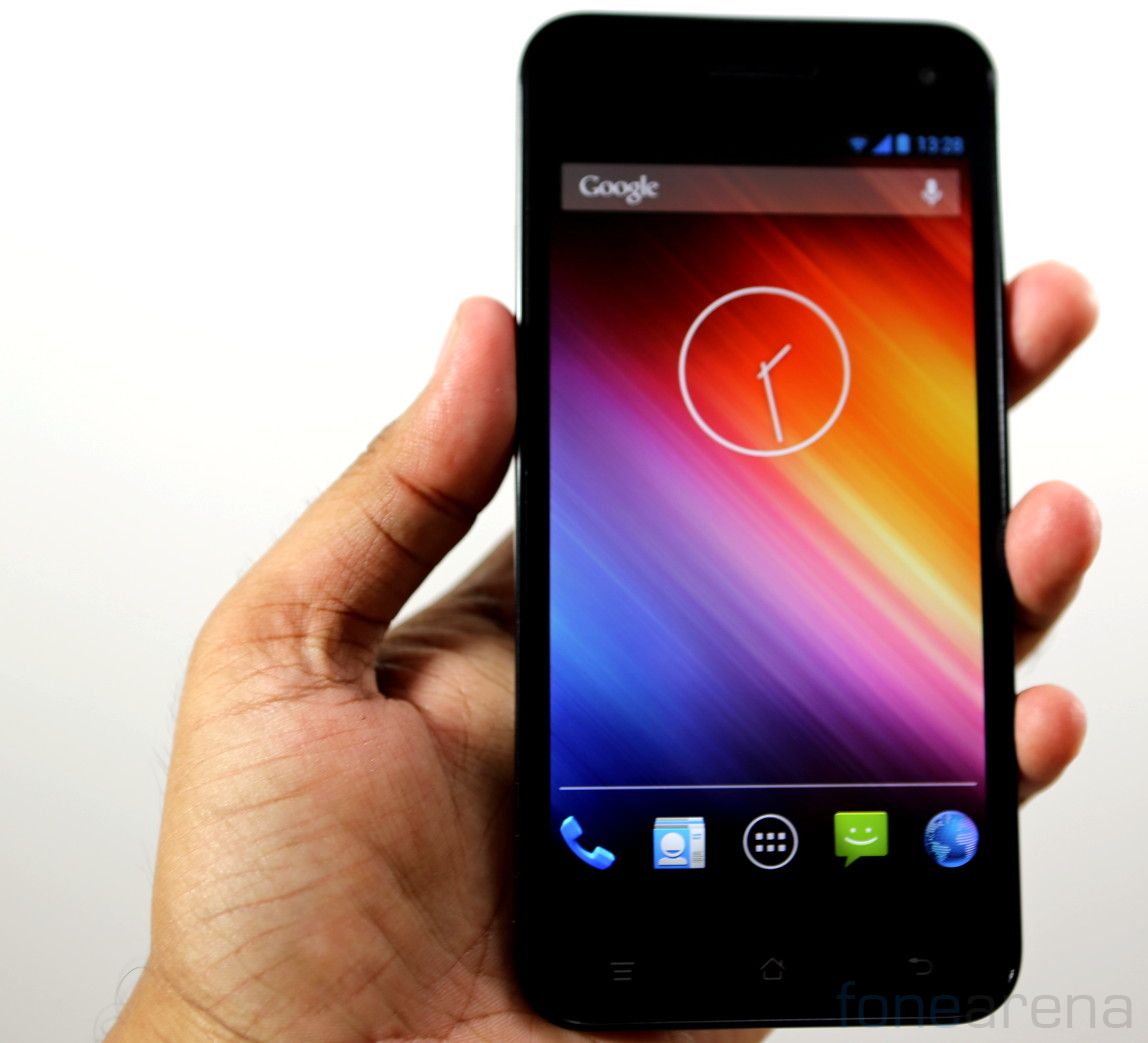
Xolo had launched several smartphones in the Q CORE series, the Q1000S is the company’s latest smartphone in the series. It is also the successor of the Q1000 that was launched back in May. The Q1000S that was launched at the end of August at a price tag of Rs. 18,999 has the same 5-inch display, but this has an upgraded 1.5 GHz quad-core MediaTek 6489 Turbo processor, a 13MP rear camera and a 5MP front-facing camera. Can this compete with other similar range smartphone in the market ? Let’s find out in the review.
Unboxing
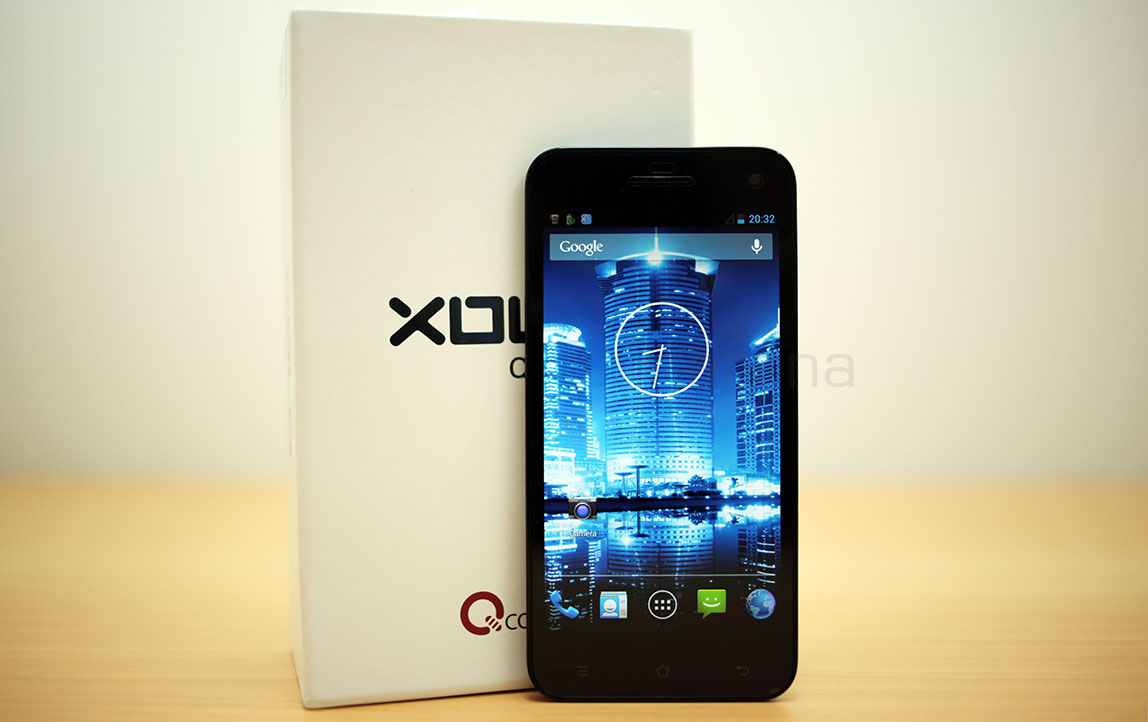
We unboxed the phone last week. Check out the unboxing video.
httpv://www.youtube.com/watch?v=1s9xzoXQPCM
Video Review
httpv://www.youtube.com/watch?v=h9-UcWZHI0I
Box Contents
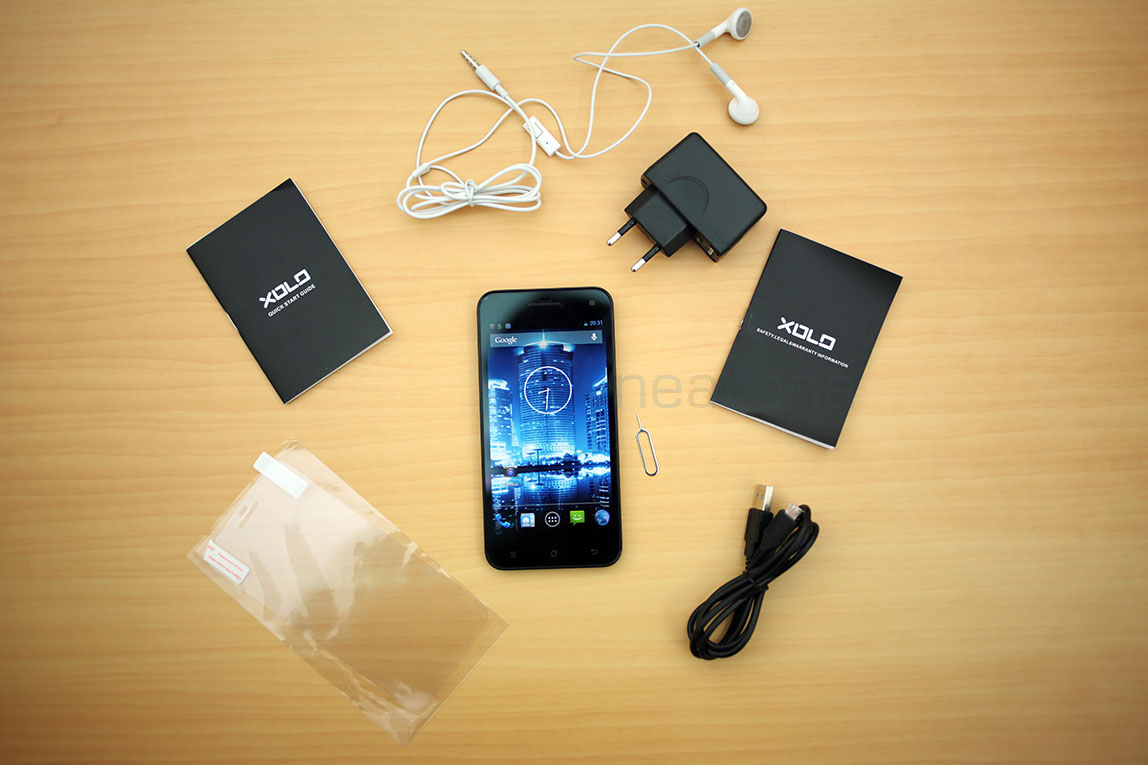
The Box contents include,
- Xolo Q1000S handset
- 2-pin charger
- micro USB cable
- Earphones
- Screen guard
- Quick start guide
- Warranty card
- SIM card remover
Hardware
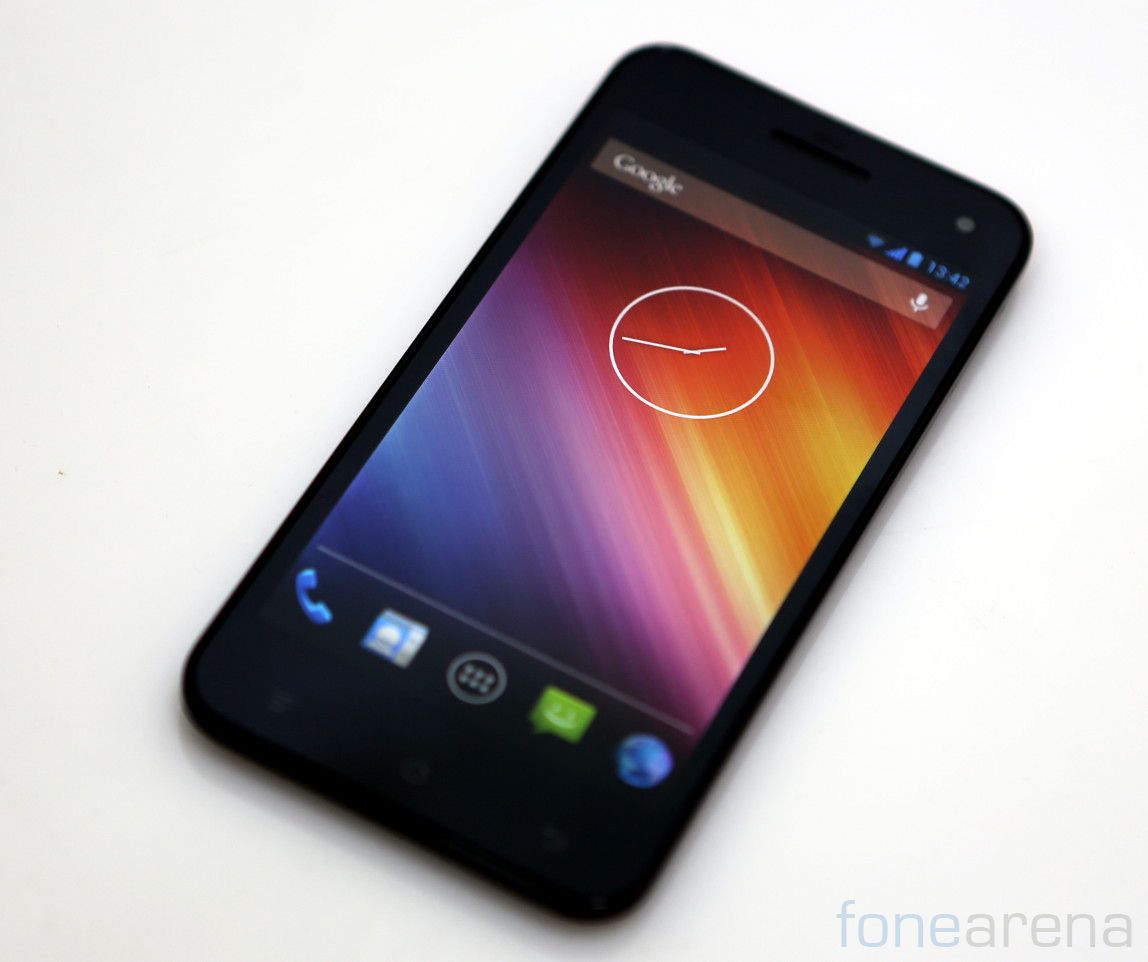
The phone has a brilliant 5-inch IPS display at a resolution of 1280 x 720 pixel at 294 PPI pixel density. The display is based on one-glass solution (OGS) technology similar to the A1000 and the Q1000 that minimizes the phone’s thickness by reducing the air gap between the touch sensor, display and the cover glass. The display is bright and has great viewing angles. Even though the phone features a ambient light sensor that automatically controls the screen’s brightness based on the lighting, the outdoor visibility is not impressive. Since the display is glossy, it is prone to finger prints.
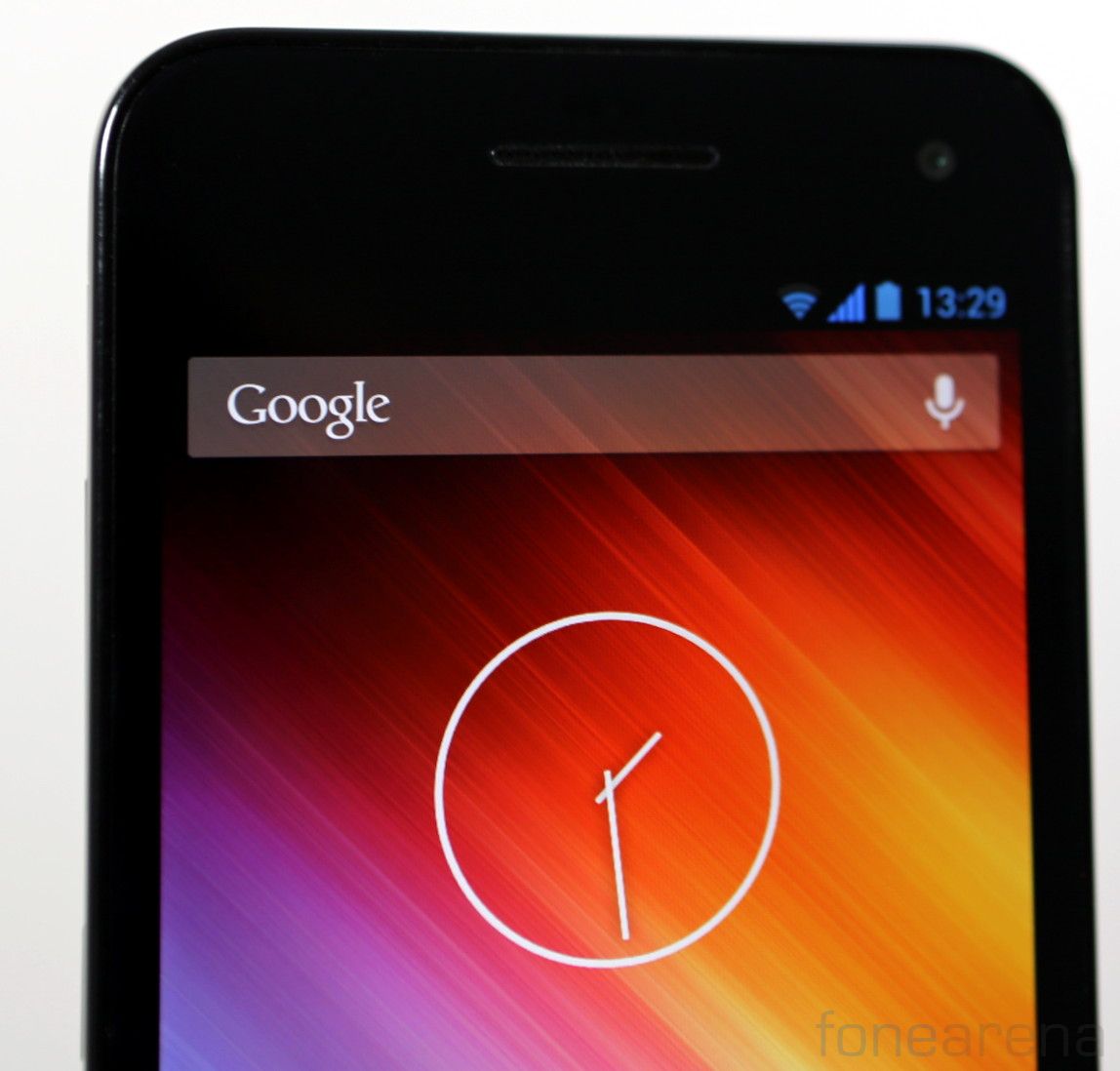
There is an ear piece on top along with a 5-megapixel front-facing camera with BSI sensor. It can record videos at 480p resolution. The Proximity and Ambient light sensors are present on the other side. Since this is a black phone these are hardly visible.
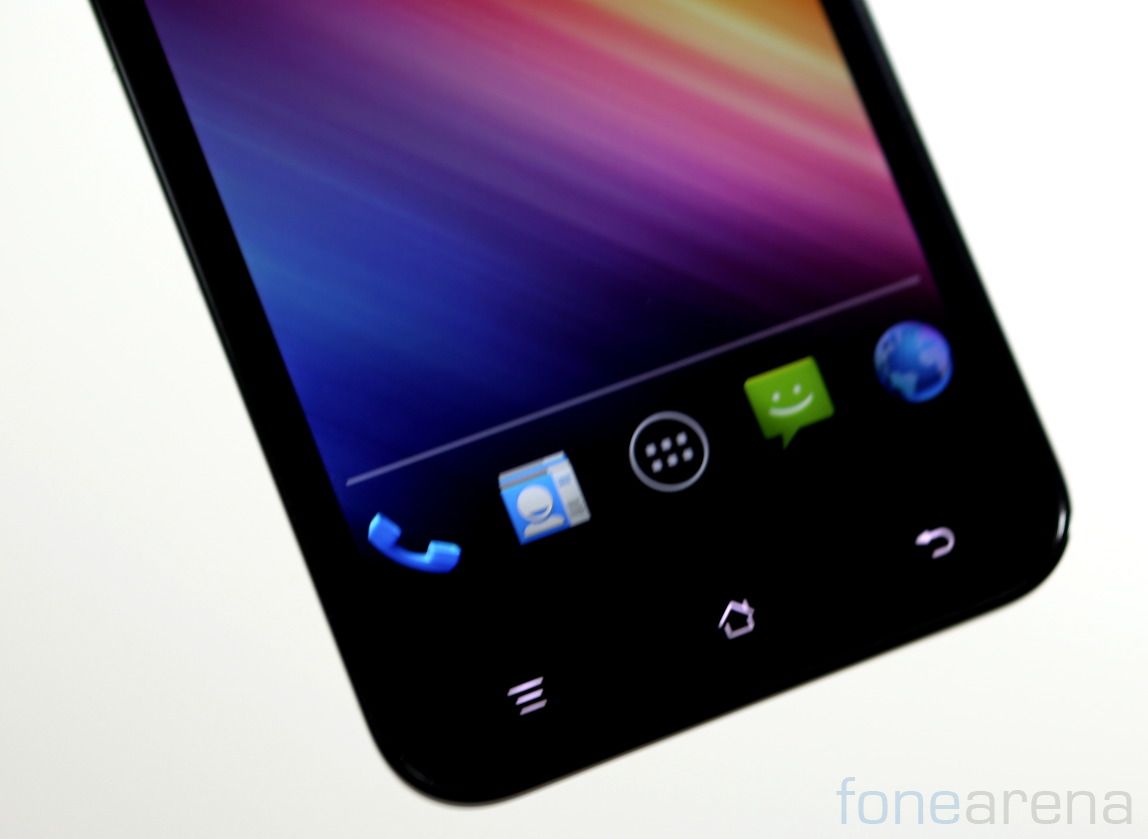
There are the usual set of capacitive touch buttons below the display. These light up when pressed, but the haptic feedback is mild compared to the Q1000.
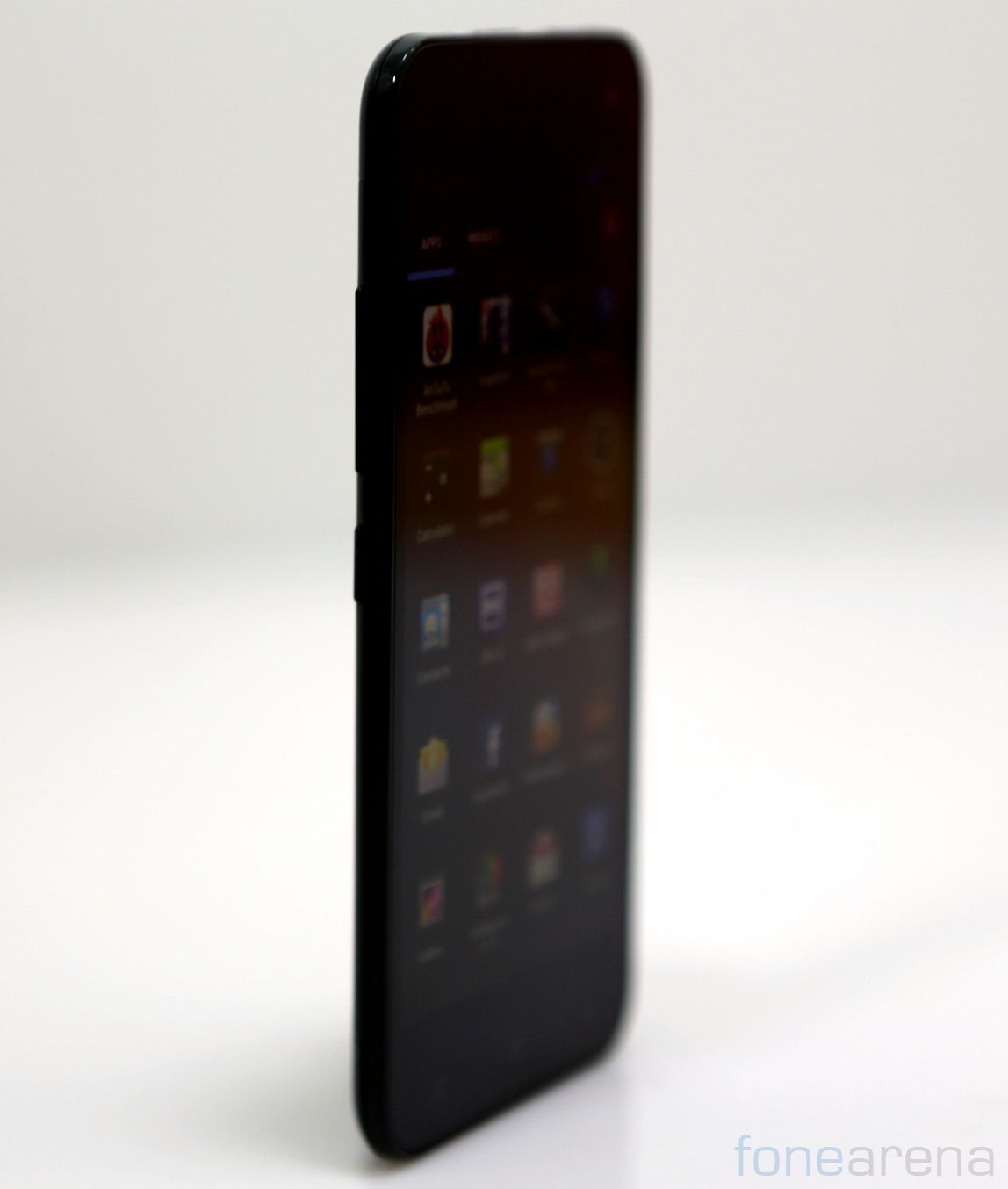
The phone is 6.98mm thick, which is much thinner than most of the smartphones in the similar range. The Q1000 is 8.8mm thick, so this one is around 1.8mm thinner. Even though the OGS display plays the main role in reducing the display thickness, Xolo has opted for a sealed back and placing the SIM card module on the side. It weighs 158 grams compared to 171 grams in the Q1000.
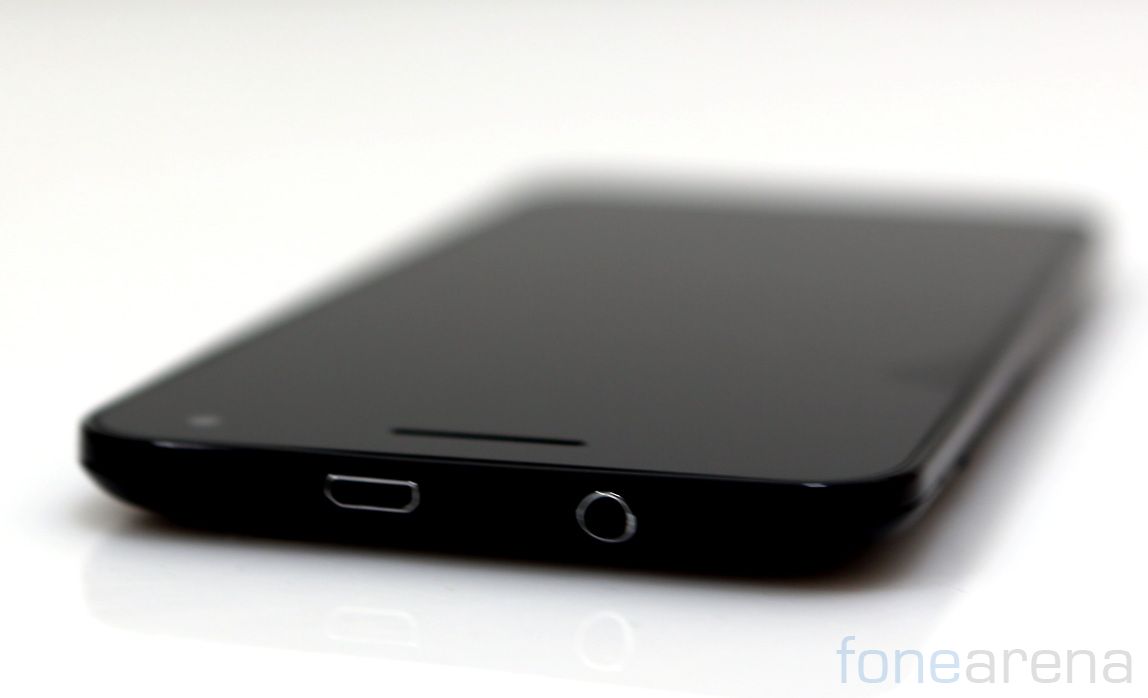
The micro USB slot and the 3.5mm audio jack are present on the top.
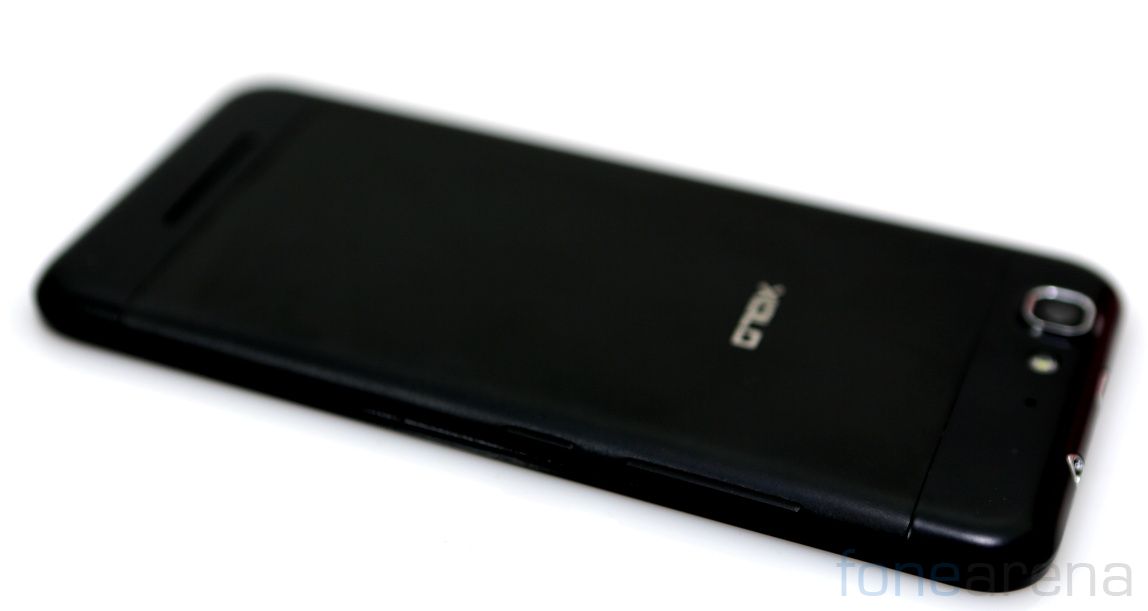
The hardware buttons are actually present on the back of the phone to access them easily when you are holding it. The volume rocker and the power button are present on the left side. The Q1000 had a dedicated camera button, but this lacks it.
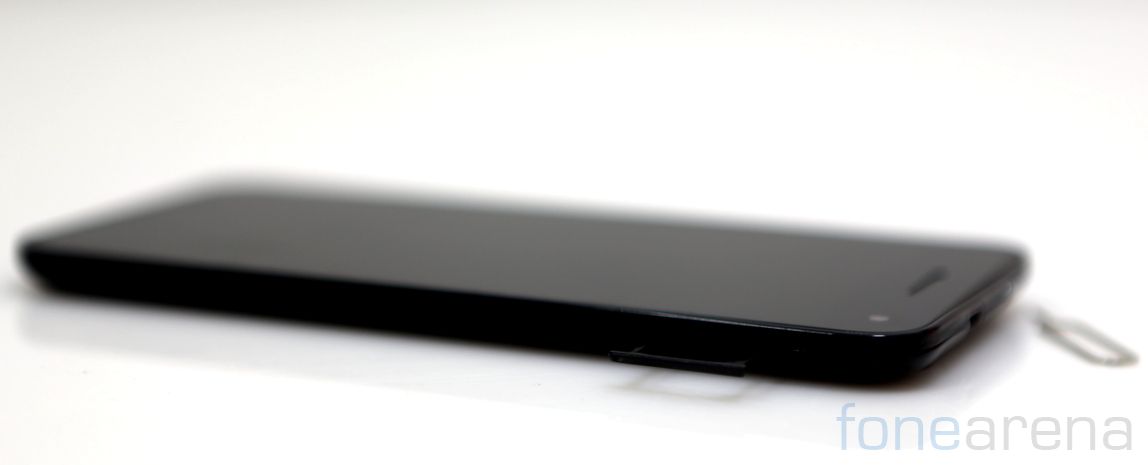
There is a SIM card slot on the right side of the phone.
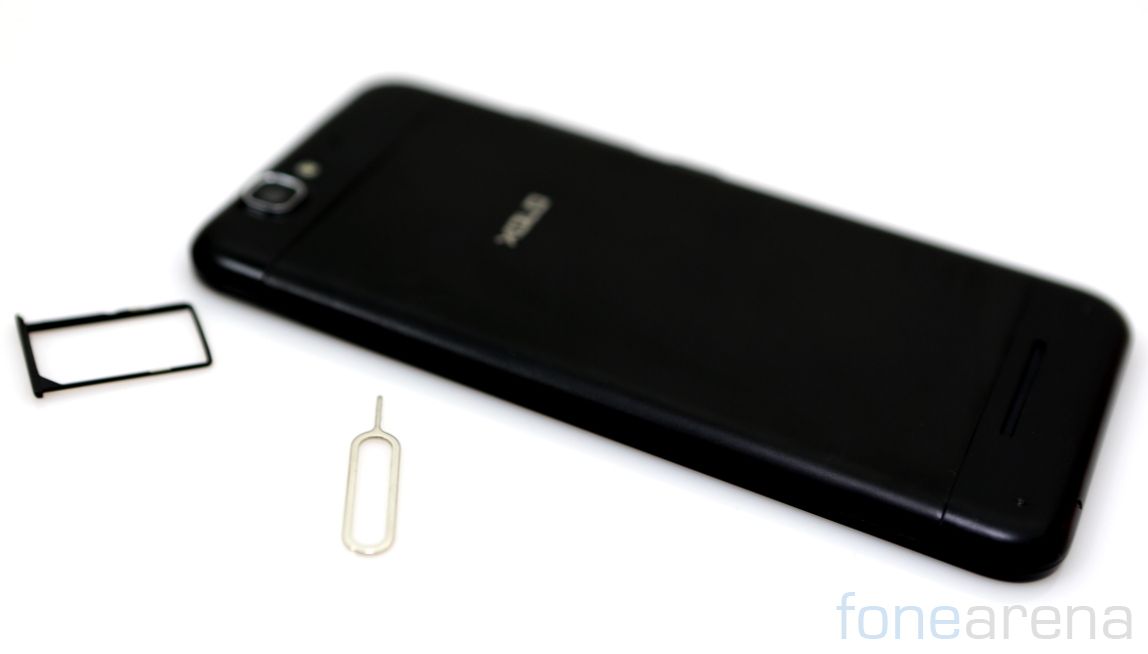
This is a standard mini SIM card. You also get a SIM ejector tool to open the slot. Xolo could have added a micro SIM slot since most of the manufacturers such as Samsung use micro SIM even for dual SIM phones.
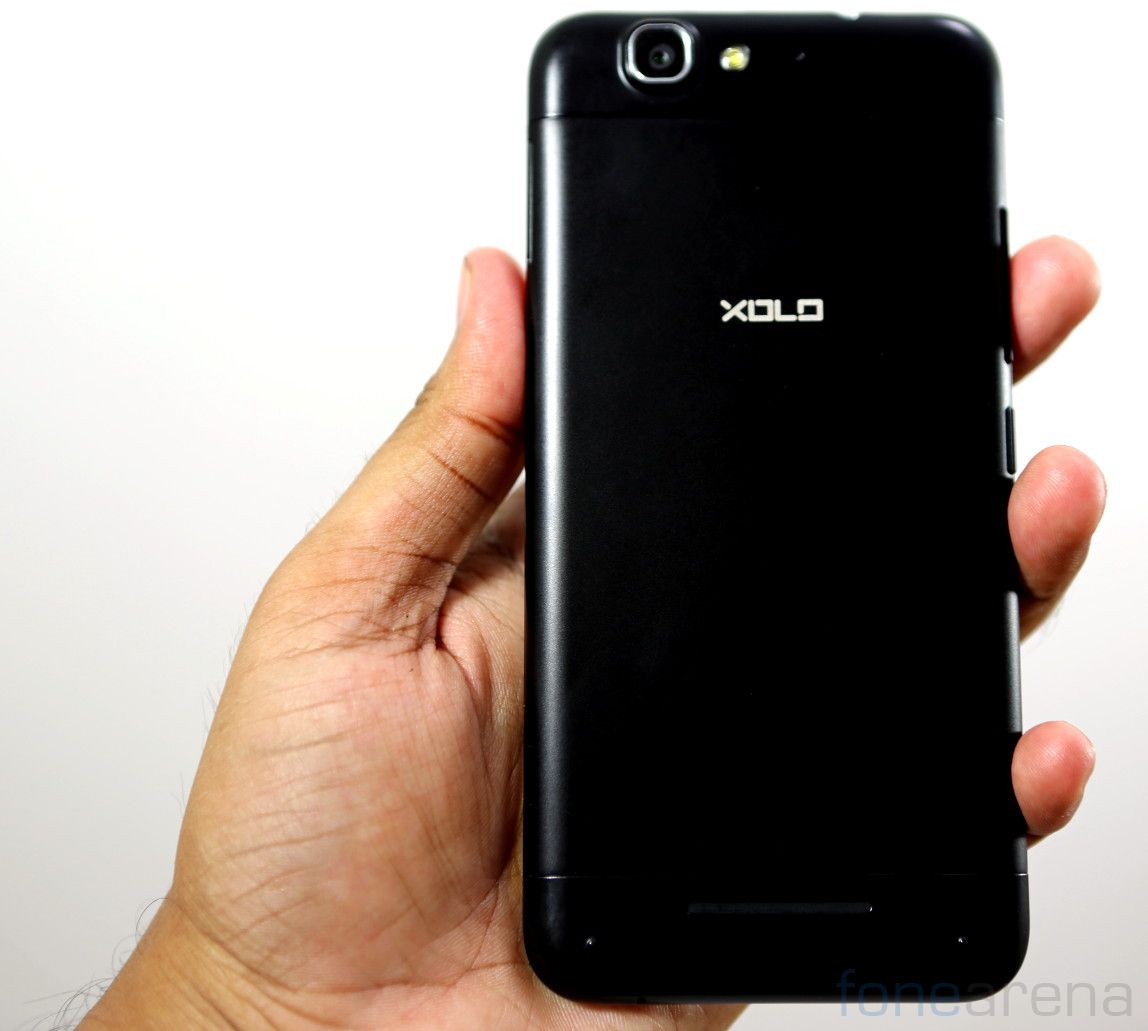
There is a 13-megapixel auto focus camera on the back with an LED flash and a secondary microphone. Xolo says they have used BSI sensor version 2 that promises to offer improved low-light imaging. There is a tiny secondary microphone hole next to the camera. The back in divided into three parts, the top part has the camera module, the center part has a XOLO logo and the bottom part has the speaker. The build quality is good. Since the plastic back has a glossy finish, it is a fingerprint magnet.
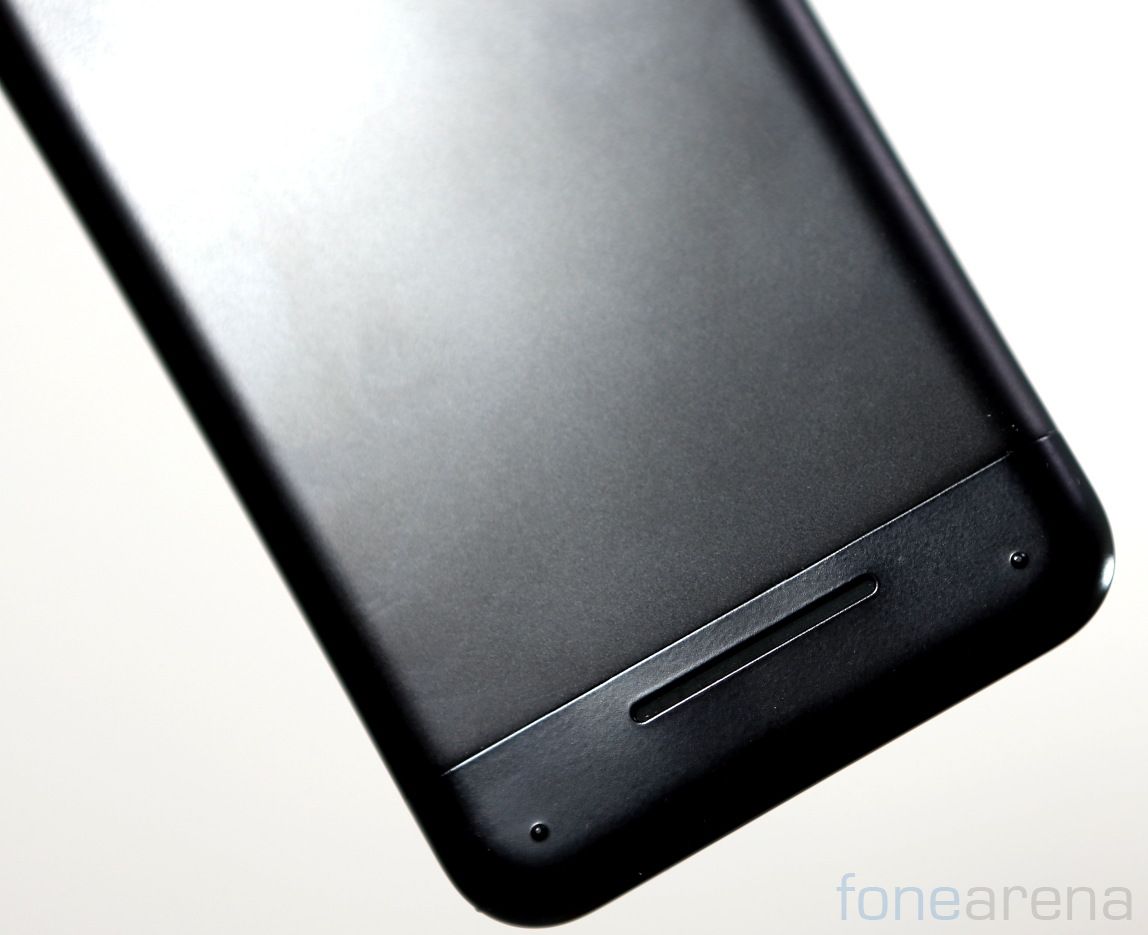
The loudspeaker is present in the bottom. There are tiny plastic bushes on either side that raises the phone a bit when it’s placed on a table.
Camera

The 13-megapixel auto focus camera takes decent shots with the 13.3MP sensor at a resolution of 4864 x 2736. You can take shots both the 4:3 and 16:9 aspect ratios at the same 13MP resolution. It has Back Side Illumination (BSI) 2 sensor, but the day light and the low-light images were below average. The macro shots were good, but the focus was not proper in the macro shots. We are not sure the problem is with our unit or if Xolo needs to update the software to improve the camera performance. The flash is perfect, which lights up at the correct time.
Since this is runs on Android 4.2, it support lockscreen widgets that lets you launch the camera directly from the lockscreen. The camera UI is similar to the Q1000 with a navigation bar on the left pane that lets you change the different camera modes including HDR, Panorama, Smile shutter and more. There is a Flash toggle and option to switch between either cameras on the top. You can just swipe to the left to view previously shot images or videos. The settings menu lets you enable GPS location, adjust exposure, white balance, add color effects, change the scene mode and adjust anti-flicker mode. You don’t get Google Photo Sphere that is present in the stock version.
Check out some camera samples
The phone can record videos at 1080p Full HD resolution. The video quality is average and is not bright. Since the phone has a secondary microphone the audio is crisp. The video is too sharp The Electronic image stabilization (EIS) uses software enhancements to minimize blurring and device shake.
Here is the 1080p Full HD video sample.
httpv://www.youtube.com/watch?v=P2zvAq0VVsA
Check out the Xolo Q1000S camera review video to know about the phone’s camera in detail
httpv://www.youtube.com/watch?v=ToiiyAZA63g
Software

The phone runs on Android 4.2.1 Jelly Bean similar to the Q1000 with support for lockscreen widgets, Quick Settings, Photo filters and lots more. There are 5 homescreen, you can’t add or remove the number of home screen. You can press and hold on the home screen to change the wallpaper.
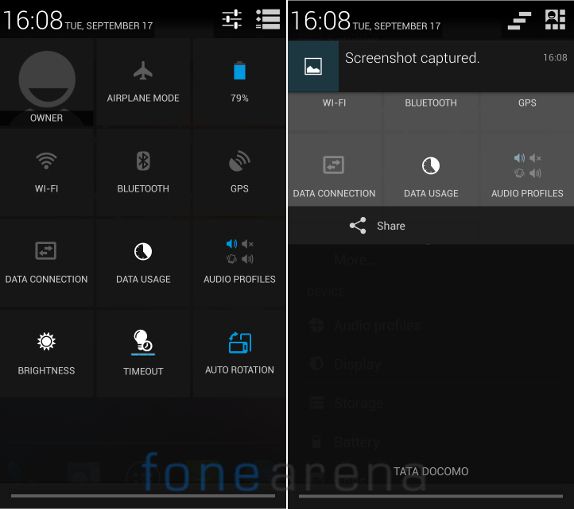
When you swipe from the top with a single finger, you get the transparent notification screen. You get the Quick Settings when you pull down from the top with 2 fingers. This lets you control Brightness, WiFi, Airplane mode, Bluetooth, Auto rotation and more. You can hold some of these quick toggle buttons to get to the advanced settings. It also offers rich notifications that lets you perform several actions directly from the lock screen.
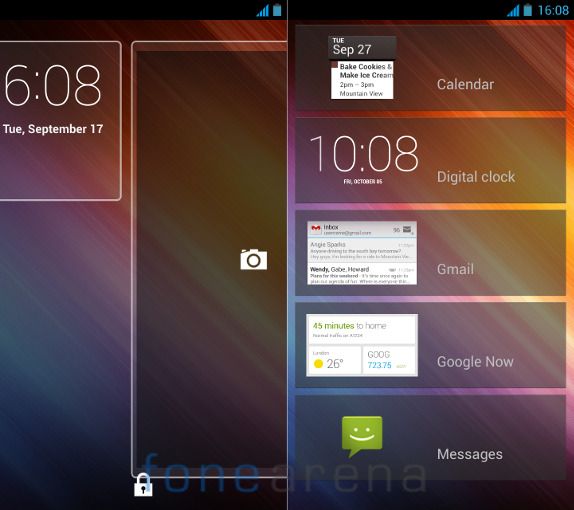
The lock screen lets you add widgets. You can add a range of widgets and also swipe to the right to launch the camera directly from the lock screen. It has Google Now, but you can’t access it from the lock screen, however you can add the Google Now widget on the lock screen. Other features include, Daydream option in the display settings that shows a screensaver when the phone is charging or docked. There is a sound enhancement option in the profile settings for better audio through the earphone on voice calls. The scheduled power on & off feature that lets you switch the device ON and OFF at a particular time.
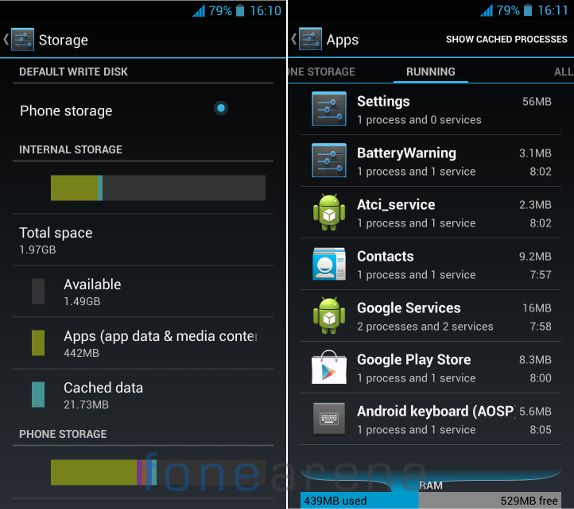
Out of 1GB of RAM, you get 971MB of usable RAM. About 530MB of RAM is free when the phone is idle. Out of 4GB of internal storage you get 1.97 GB of user storage for apps.

Out of 16GB of phone storage you get about 11.35GB of usable storage. You can also move apps to the phone storage from the internal memory. The phone doesn’t have a micro SD card slot to expand the memory.
Apps
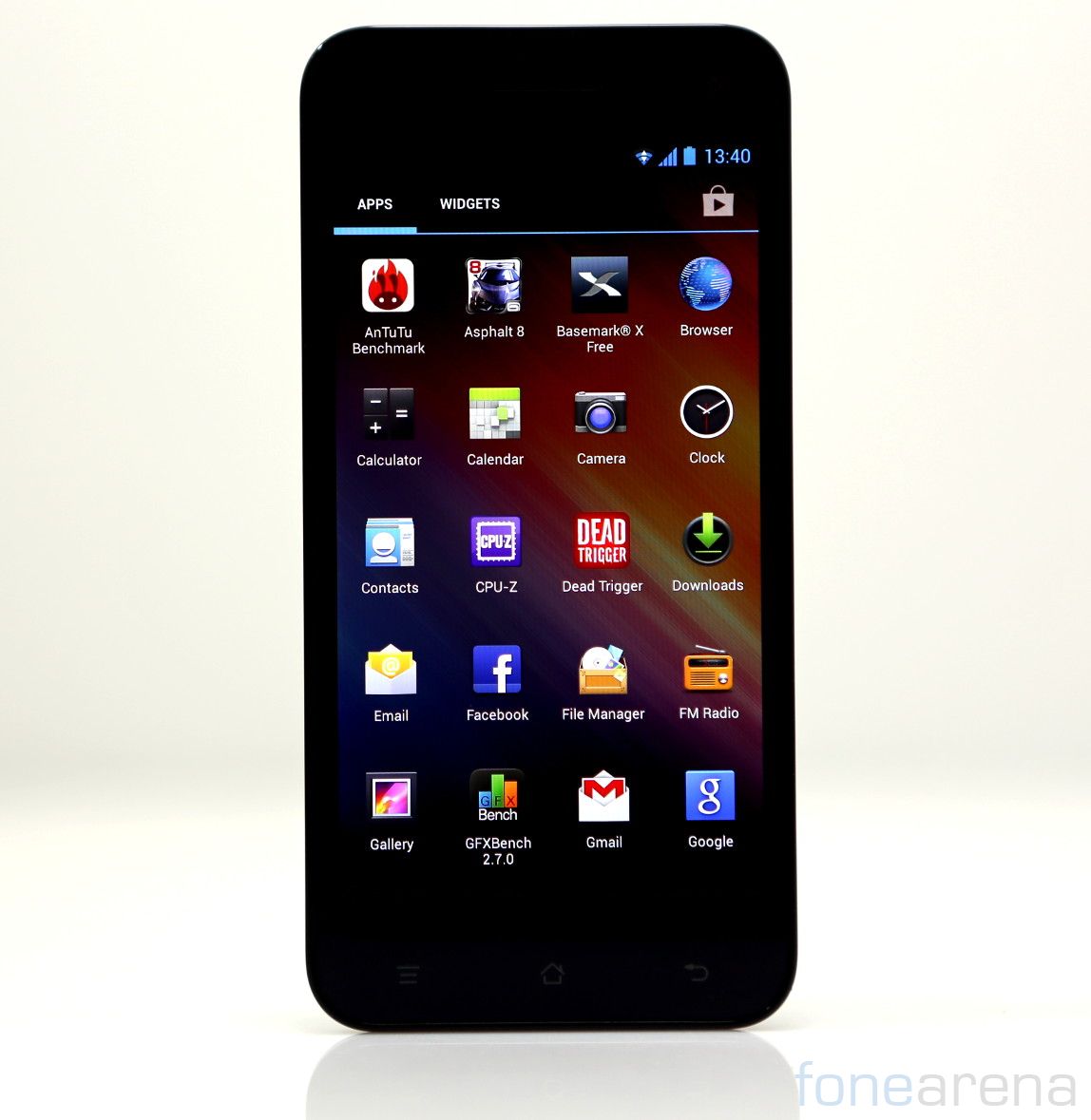
It with a lot of pre-installed apps. Utility apps include, Backup and Restore (to backup apps and personal data to and from the SD card), Calculator, Clock, File Manager, NoteBook, Email, Sound Recorder and ToDo . The phone doesn’t comes pre-installed with the Xolo Secure and Xolo Power apps, which could also be downloaded for other Xolo smartphones from the Google Play. The Xolo Secure app keeps the phone protected by locking and also lets you track it remotely and the Xolo Power app that optimizes battery usage that lets you set data sync frequency, night mode and low battery mode to conserve battery life.
Music Player and FM Radio
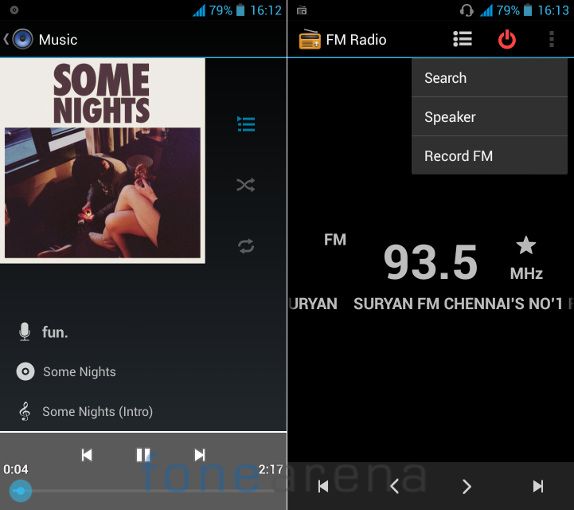
The Music Player is stock, and can play several audio formats, including MP3, MIDI, WAV, 3GP, AAC and AMR. You can enable equalizer from the settings and use Bass boost and 3D effect features when you are listening using earphones. The phone has FM Radio with auto search, recording and RDS support. Audio from the loudspeaker is good and the bushes on the back, next to the speaker helps to a certain extent from audio being suppressed when you place it on a flat surface. The phone has standard set of ear-phone, unlike the in-ear earphones that came with the Q1000, but the audio is decent. The default video player can play videos at full HD 1080p resolution.
Calls and Messaging
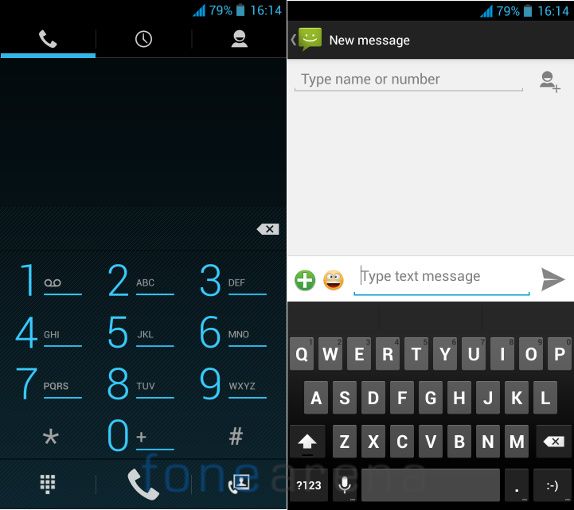
The dialer and the messaging features are similar to the smartphones from local OEMs. Since this doesn’t come with Dual SIM support, you don’t have options to switch SIM cards. The keyboard is stock, but it doesn’t come with gesture typing like the stock Android 4.2.
Connectivity
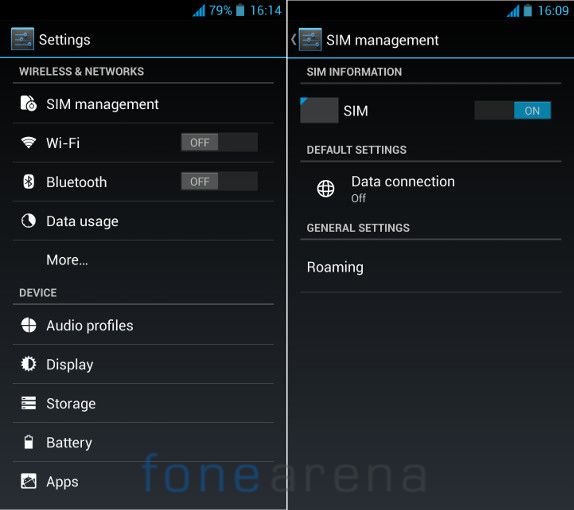
The connectivity features include, 3G (HSDPA: 42.2 Mbps, HSUPA: 11.5Mbps), Wi-Fi 802.11 b/g/n, Bluetooth v 4.0 with A2DP and GPS. It has support for wireless display that lets you share content from the phone to a HDTV by connecting a wireless display adapter to a HDMI-enabled TV. Even though this has single SIM support, you have a SIM management option to manage the data connection and roaming options. It doesn’t come with USB OTG support present in the Micromax Canvas 4.
Performance and Benchmarks
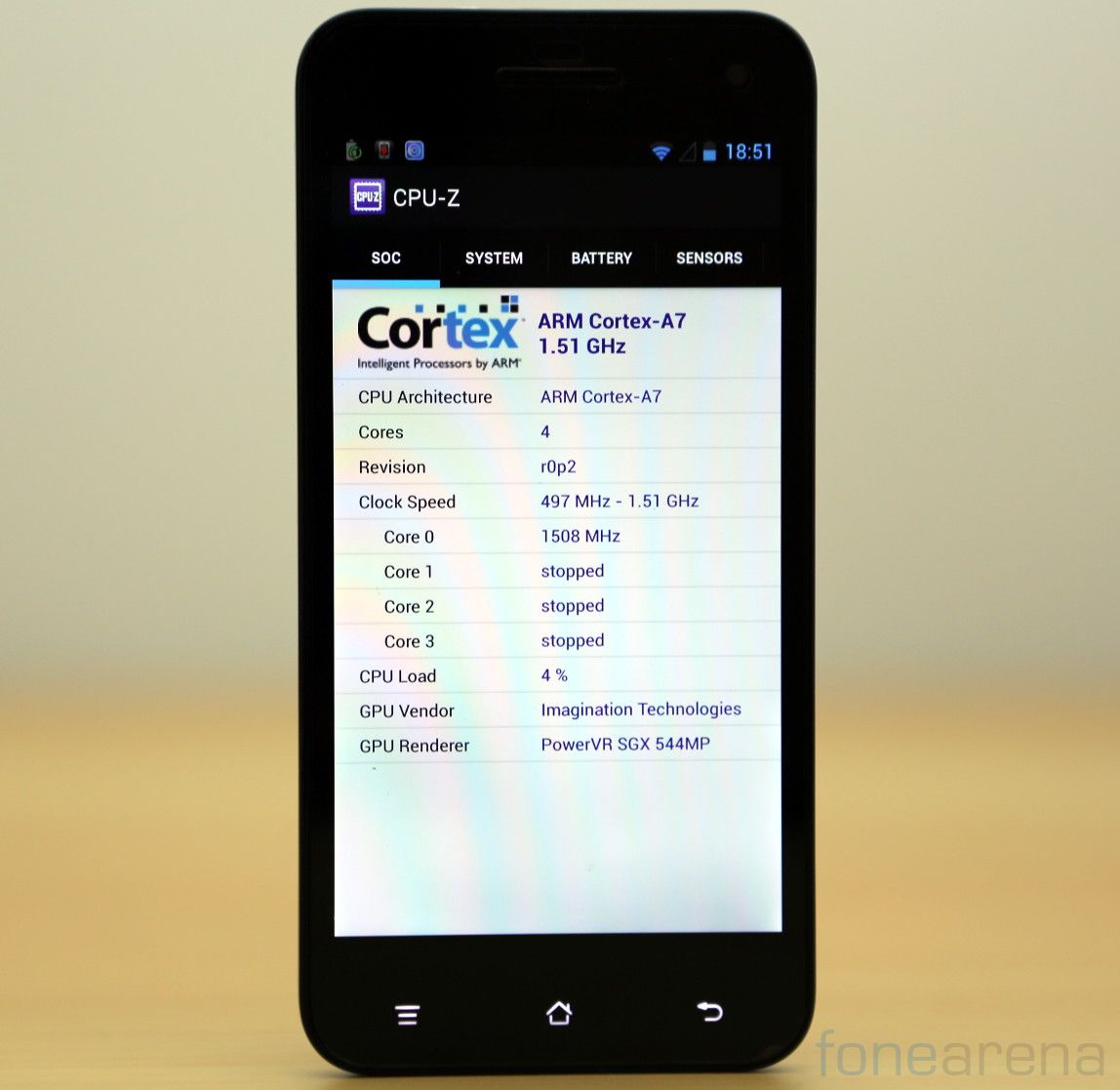
The phone is powered by a quad-core MediaTek 6589T processor clocked at 1.5 GHz with PowerVR SGX 544MP GPU. Since this has a faster processor, the scores would obviously be better than the MT6589 chip clocked at 1.2 GHz present in the Q1000.
Quadrant Benchmark
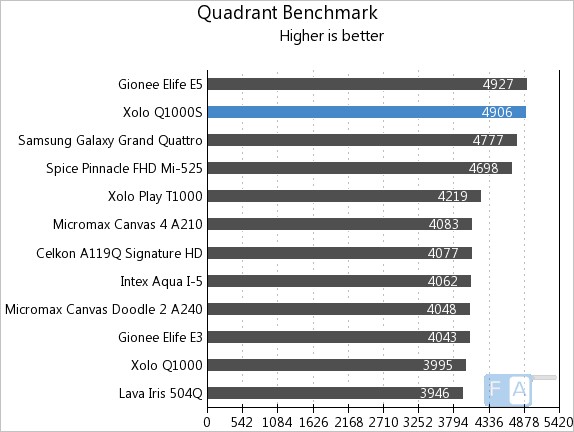
The Elife E5 that has a similar processor beats the Q1000S by few points.
AnTuTu Benchmark 3.3
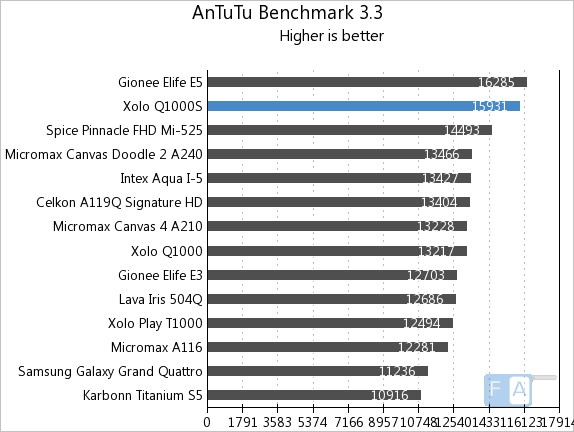
Again the Elife E5 from Gionee beats the Q1000S to grabs the first place in the AnTuTu Benchmark 3.3, but the Q1000S scores better than the Spice Pinnacle FHD.
Vellamo 2.0 HTML5
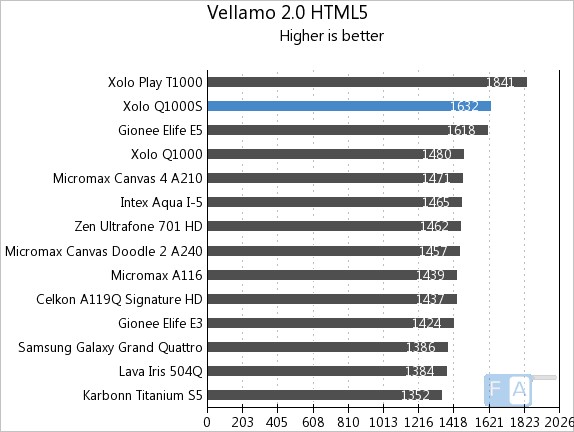
In the Vellamo 2 HTML5 browser benchmark, the Q1000S is behind the Xolo Play with over 1600 points. Check out the complete set of Xolo Q1000S Benchmarks here.
We tried out games like Asphalt 8, Dead Trigger, Riptide GP2, Wild Blood and Shadow Gun. The gameplay was good, but the graphic details a bit less and there was a bit of lag in some games.
Here is the Riptime GP2 gameplay
httpv://www.youtube.com/watch?v=u66hMcMRDws
Here is the Wild Blood Gameplay
httpv://www.youtube.com/watch?v=qzcYr8MZdzw
Also check out the Gaming Review to know more about the gamplay performance of the Q1000s in detail
httpv://www.youtube.com/watch?v=KsyHJUy8o7o
Battery life
Coming to the battery life, the phone packs a 2500 mAh battery, larger than all the flagship phones from Xolo. The Q1000 had a 2100 mAh battery. The battery life is a bit better than the Q1000 with normal use. You get a day of battery life with average use and more than a day if you use the bundled Xolo Power app.
Conclusion
Overall, the Xolo Q1000S is a decent upgrade to the Q1000. It has good display, has a slimmer body with good build and is powered by a faster quad-core processor. The camera could be better and the phone lacks a memory card slot. At a market price of Rs. 16,999, it is a bit costly compared to similar smartphones in the range. If you are looking for a phone with a slim design and good display,but can compromise on the camera and the micro SD slot, go for it.
Pros
- Good display
- Good build quality
- Good performance
- Decent battery life
Cons
- Below par camera performance
- Single full size SIM card slot
- No expandable memory card slot
- Slightly on the expensive side






